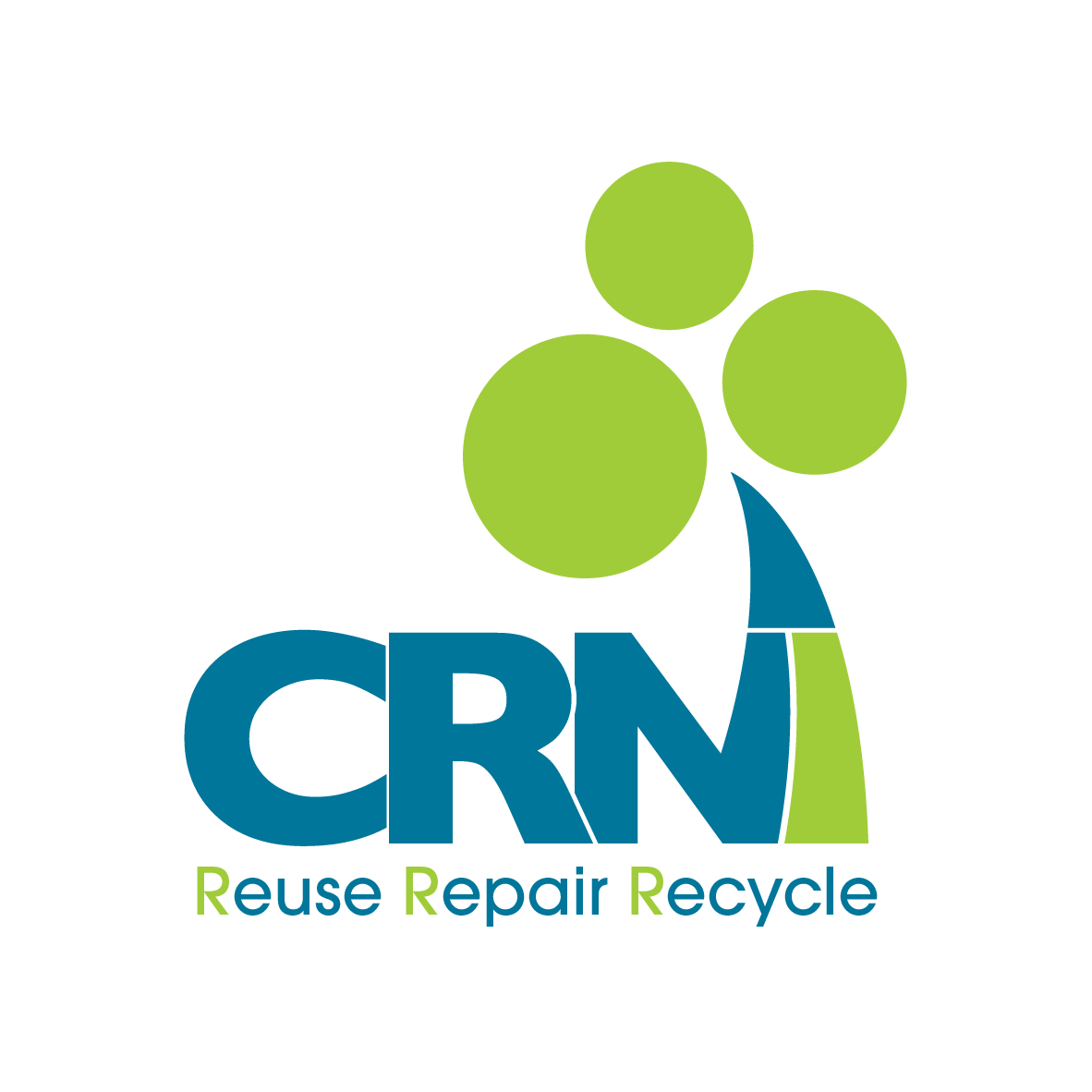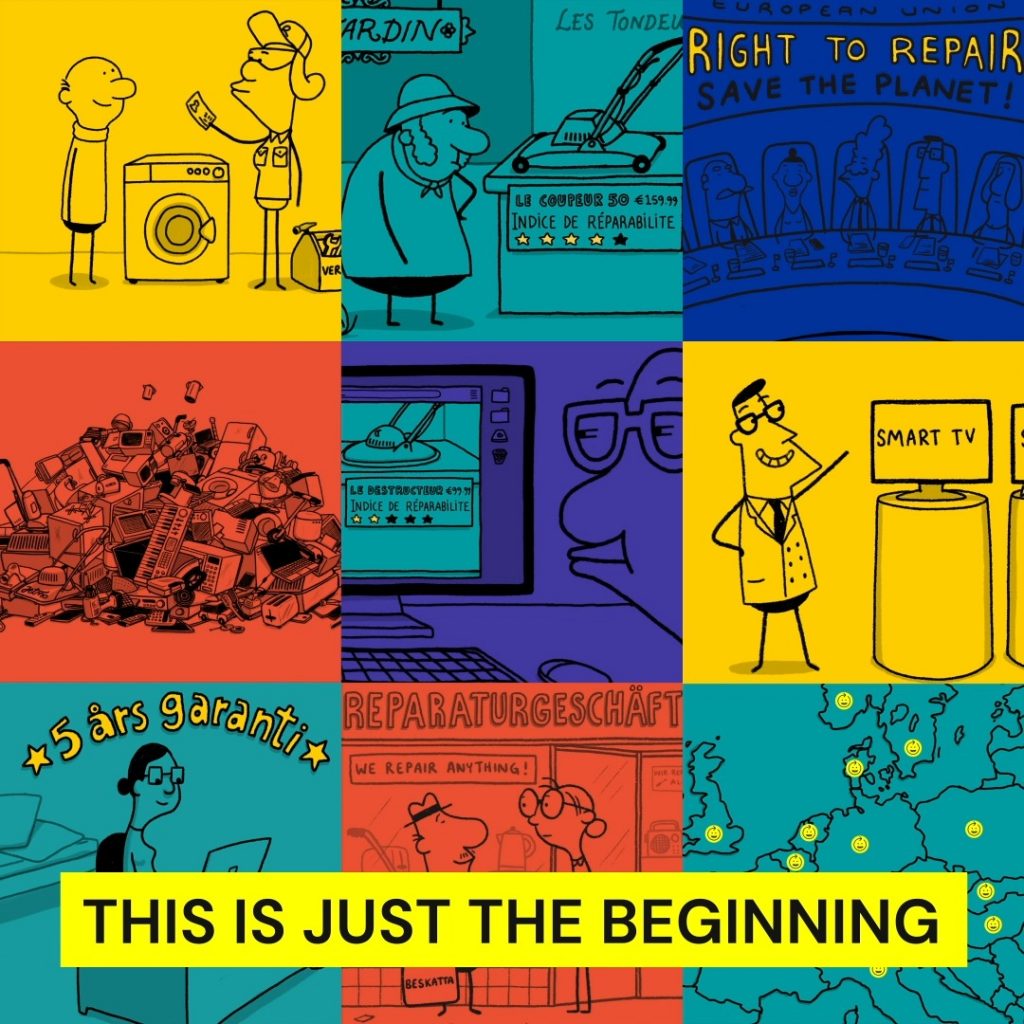It’s been quite a year for the Right to Repair movement in Europe! From influencing votes on premature obsolescence to pushing for smartphones to be regulated, from expanding our coalition to calling out corporations – we’ve had our hands full over the past 12 months. If you’re ready for an end of the year round-up, let’s get started!
The year Europe promised a “Right to Repair”
At the end of 2019, the newly appointed European Commission presented its Green Deal which, as its “man on the moon moment”, was supposed to steer every future policy towards sustainability and green ambitions. Of course, this news sparked a lot of enthusiasm across the continent including for us – as we knew this was a historic opportunity to bring the issue of repair as an essential component of a sustainable society into the front of the scene.
We kicked off the year by launching the #LongLiveMyPhone campaign to raise awareness about the many issues that prevent us from using smartphones for longer and repairing them, and what should policy makers do to fix the problem. Over 26,000 people signed our petition. We organised stunts in Belgium, Germany and the UK calling for our “disposable” economy to end, while pushing behind the scenes for policy makers to set minimum requirements that would force manufacturers like Samsung, Huawei and Apple to design smartphones that can be easily disassembled and repaired.
In March, we received the big news that the European Commission was promising a ‘new right to repair’ in its Circular Economy Action Plan (one of the foundations of the Green Deal), committing to making sustainable products the norm and putting the focus on electronics and ICT devices, starting with smartphones.
Since then, we’ve participated in many consultations and talked to EU policy makers to ensure any future policies about repair are as ambitious as claimed and don’t get watered down by the industry. For instance, we had to publicly call out the industry when they asked the EU to delay already-agreed regulations using Covid as a reason.
More recently, we received the support of the European Parliament! MEPs were voting on a report on sustainable products which included elements on the premature obsolescence of devices and the mandatory labelling of products on repairability. After weeks of opposition where conservative and liberal parties tried to water down the original, more ambitious version of the report, the final vote was a clear signal from the Parliament that MEPs support Right to Repair and they’re ready to stand by consumers and the environment in the fight against obsolescence!
And it’s not just happening in Brussels! All across Europe, measures are being developed and adopted towards making repair the norm!
While all this is great news, it’s only a first step towards ambitious regulations. We’re getting ready for some strong industry pushback next year when the debates get technical and we raise the issue of affordable spare parts and software obsolescence.
The year repair became more essential than ever
But 2020 was also the year that forced many of us to isolate and rely on our electric and electronic devices to work from home, connect with our loved ones or seek information and entertainment. During the pandemic, getting your device or appliance fixed is even more important, at a time when buying a new one might not even be possible, or we might simply not be able to afford it.
When we raised the point that “repair is essential” – especially during a pandemic – we received many messages both from repair shops who couldn’t stay open as they were not considered “essential” and from individuals who were trying to fix their devices but couldn’t access skilled technicians or spare parts.
This confirmed, if necessary, the important role of repair in building resilient communities, which can’t always rely on global, traditional supply chains.
Now that we’re looking ahead at what kind of world we want post-Covid-19, we must ensure that the independent repair and reuse sectors are not forgotten. Not only repair and reuse are essential to reach our climate and sustainability ambitions, both at national and EU levels; they also provide opportunities for jobs and training that will likely be much needed in the next few months and years.
The year Heroes of Repair took the front stage
Since launching the campaign in September 2019, we’ve grown from a few members to 40 organisations in 15 European countries making up this coalition fighting for a universal Right to Repair in Europe. Many of them are networks themselves gathering hundreds of community repair initiatives, professional repairers and repair enthusiasts!
So when the time came to celebrate International Repair Day in October, we wanted to highlight individuals across Europe who are making a significant contribution to repair in their communities. From community volunteers to skilled technicians and activists, we were incredibly proud to introduce you to our Heroes of Repair!

For us, it’s absolutely essential to amplify the work of these individuals. Especially when they’re being sued by $1 trillion company Apple, like Norwegian repairer Henrik Huseby. In the main set-back to Right to Repair of 2020, the Norwegian Supreme Court eventually ruled in favour of Apple – demonstrating that the letter of the law is completely inappropriate to the moment we are living and should be changed with ambitious legislation!
What’s next for us?
We can’t wait to keep campaigning in 2021. There’s so much that needs to be achieved – from including more products to the scope of Right to Repair regulations, to putting the issue of software obsolescence on the table, to resuming the conversation on a EU-wide repairability index all the while continuing to expand our networks of supporters and members across Europe.
We know we’ll be going against big interests next year and a strong pushback from the industry.
We need your help to achieve all of this – to and make sure we can fund our campaign materials, lobby policy makers, organise stunts, while keeping you informed on what’s happening.





